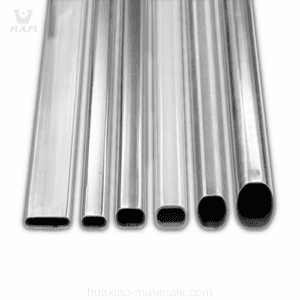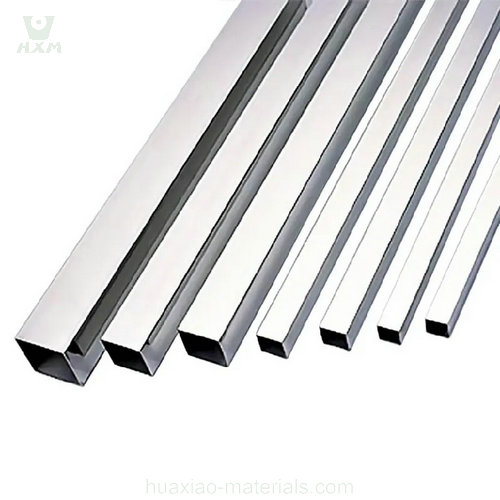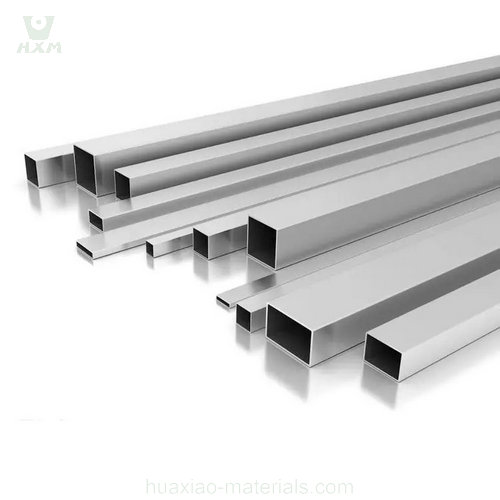Stainless steel tube is a remarkable material widely recognized for its exceptional properties and versatile applications. In this comprehensive overview, we will explore the scientific aspects of stainless steel tube, including its composition, properties, and the broad spectrum of industries where it finds application. Whether you are in the construction, automotive, or manufacturing industry, understanding the characteristics and benefits of stainless steel tube will empower you to make informed decisions for your projects.
Composition and Properties: Stainless steel tube is primarily composed of iron, chromium, and varying amounts of other elements such as nickel, molybdenum, and manganese. The presence of chromium forms a protective oxide layer on the surface, giving stainless steel its renowned corrosion resistance. Depending on the specific grade, stainless steel tube exhibits excellent mechanical properties, including high strength, ductility, and temperature resistance.
Corrosion Resistance: One of the key advantages of stainless steel tube is its exceptional corrosion resistance. The chromium content forms a passive layer that acts as a barrier against corrosive elements, including moisture, chemicals, and environmental factors. This makes stainless steel tube suitable for applications in harsh environments such as marine, chemical processing, and food processing industries.
Applications: Stainless steel tube finds extensive applications in various industries:
Construction and Architecture: It is commonly used in structural components, handrails, and decorative elements due to its durability, aesthetic appeal, and corrosion resistance.
Automotive and Transportation: Stainless steel tube is employed in exhaust systems, fuel lines, and chassis components, providing excellent corrosion resistance and mechanical strength.
Industrial and Manufacturing: It finds application in machinery, equipment, and piping systems where corrosion resistance and reliability are paramount.
Medical and Pharmaceutical: Stainless steel tube is utilized in medical instruments, surgical implants, and pharmaceutical manufacturing due to its biocompatibility and ease of sterilization.
Benefits of Stainless Steel Tube:
Corrosion Resistance: Stainless steel tube resists corrosion, ensuring long-term performance and minimizing maintenance costs.
Strength and Durability: It offers high tensile strength, allowing it to withstand heavy loads and harsh operating conditions.
Standard Grade:
ASTM:A240, SA24.
S30100, S30400, S30403, S31008, S31603, S32100, S41008, S43000, S43932, S44400, S44500.
JIS: G4304, G4305, G4312.
SUS301, SUS304, SUS304L, SUS310, SUS316L, SUS321, SUH409L, SUS410S, SUS420J2, SUS430.
EN: 10088-2, 17224, 17440, 17441.
1.4310, 1.4301, 1.4306, 1.4845, 1.4404, 1.4541, 1.4512, 1 .4000, 1.4028, 1.4016, 1.4509.
AISI: 301, 304, 304L, 310S, 316L, 321, 409L, 410S, 430, 439, 441, 444, 445.
Mill’s Standard: 201, 202, 204Cu3, L1 L4.
Processing mode:Hot Rolled, Cold Rolled.
Hot Rolled Available Size:
Finish: NO. 1, Black.
Thickness(mm):3~100.
Width(mm):914, 1000, 1219, 1250, 1500, 1524, 1800, 2000, 2500, 2800, 3000.
Length(mm):2000, 2438, 2500, 3000, 3048, 6069, 10000, 12000.
Cold Rolled Available Size:
Finish: No. 1, 2B, BA, No.3, No.4, No.5, No.8, HL, Etching, SB,Back Pass, Ti-coating.
Thickness(mm):0.3~3.0.
Width(mm): 914, 1000, 1219, 1250, 1500, 1524, 1800, 2000.
Length(mm):2000, 2438, 2500, 3000, 3048, 6069, 10000.
Protect Film:PVC, PE, LASER-PVC, Black-White, Blue-White, 20um-120um.
Introduction: 316 stainless steel tube is a remarkable material renowned for its exceptional properties and wide-ranging applications. In this comprehensive guide, we will delve into the scientific aspects of 316 stainless steel tube, including its composition, properties, applications, and the benefits it offers. Whether you are in the marine, chemical, or architectural industry, understanding the features and advantages of 316 stainless steel tube will empower you to make informed decisions for your projects.

Composition and Properties: 316 stainless steel tube belongs to the austenitic stainless steel family and is primarily composed of iron, chromium, nickel, and molybdenum. It typically contains around 16-18% chromium, 10-14% nickel, and 2-3% molybdenum, which contribute to its exceptional corrosion resistance, high tensile strength, and excellent heat resistance. Additionally, its low carbon content enhances its weldability and resistance to sensitization.
Corrosion Resistance: One of the key attributes of 316 stainless steel tube is its superior corrosion resistance. It exhibits excellent resistance to a wide range of corrosive environments, including acidic, alkaline, and chloride-containing environments. This makes it highly suitable for applications in marine environments, chemical processing, and medical equipment where corrosion resistance is critical.
Applications: 316 stainless steel tube finds extensive applications in various industries:
Marine Industry: It is widely used in marine equipment, such as boat rails, navigation systems, and offshore structures, due to its exceptional resistance to saltwater corrosion.
Chemical Processing: 316 stainless steel tube is commonly utilized in chemical processing plants, including reactors, heat exchangers, and piping systems, where it withstands corrosive chemicals and high-temperature environments.
Medical and Pharmaceutical: It is employed in medical equipment, surgical instruments, and pharmaceutical manufacturing due to its hygienic properties, resistance to sterilization processes, and biocompatibility.
Architectural and Construction: 316 stainless steel tube is used in architectural applications, such as handrails, balustrades, and structural components, due to its aesthetic appeal, durability, and corrosion resistance.
Benefits of 316 Stainless Steel Tube:
Superior Corrosion Resistance: 316 stainless steel tube exhibits excellent resistance to corrosion, making it suitable for harsh environments and corrosive substances.
High Strength and Durability: It offers impressive tensile strength, ensuring structural integrity and longevity in demanding applications.
Heat Resistance: 316 stainless steel tube maintains its strength and corrosion resistance at high temperatures, making it suitable for applications involving heat exposure.
Hygienic and Easy to Clean: Its smooth surface finish and non-porous nature make it easy to clean, ensuring compliance with strict hygiene standards in industries such as food processing and medical.
Weldability and Fabrication: 316 stainless steel tube is easily weldable and can be formed into various shapes, allowing for versatility in manufacturing and assembly processes.
Conclusion:
316 stainless steel tube is a superior material with exceptional properties, including superior corrosion resistance, high strength, and heat resistance. Its applications span across various industries, including marine, chemical processing, medical, and architectural. Understanding the composition, properties, and benefits of 316 stainless steel tube enables informed decision-making when selecting materials for specific projects. With its impressive attributes and versatility, 316 stainless steel tube continues to be a top choice for numerous applications, delivering reliability and performance in demanding environments.




Copyright@2023 Huaxiao Metal Corporation Limited . All rights are reserved
WhatsApp us
Feel free to contact us!
If you need our products, please leave us a message with the specific specifications and quantity through the window on the right!
Reply within 24 hours